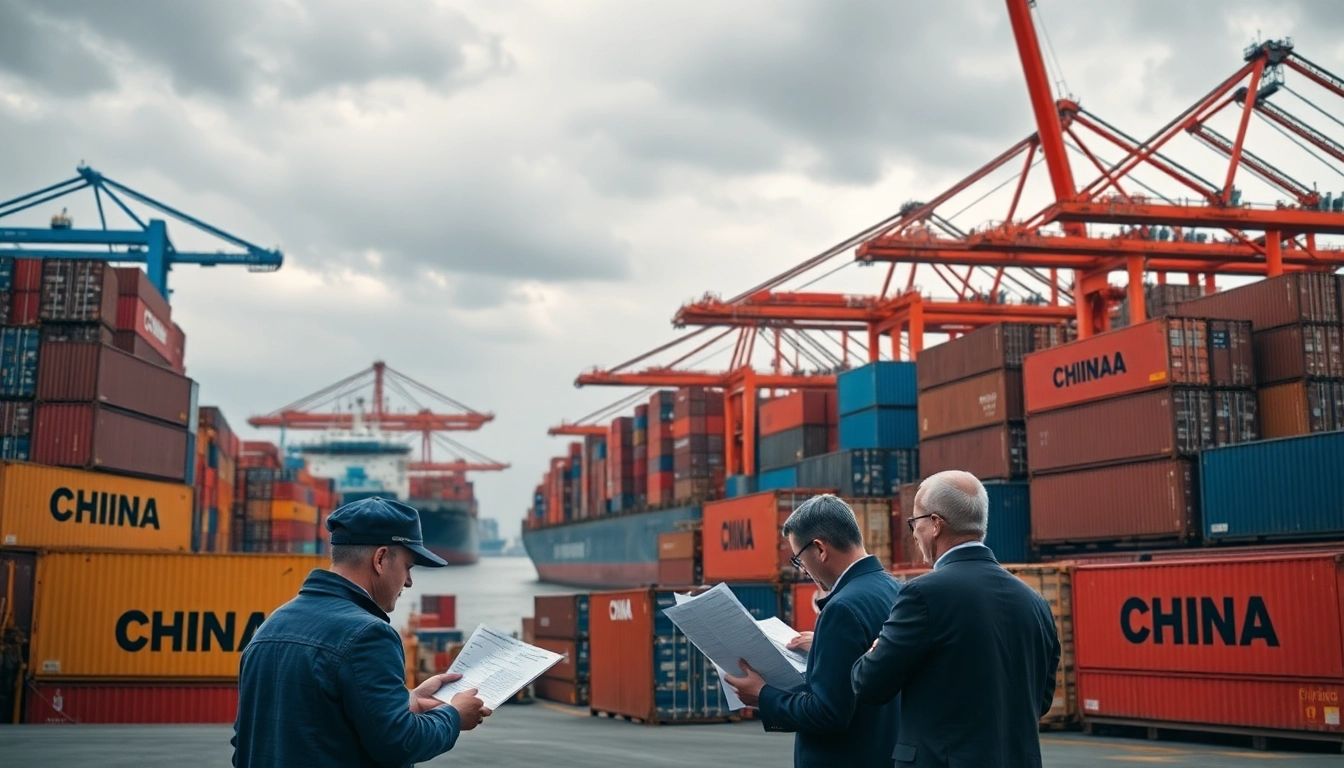Introduction to Import Tariffs on China
Import tariffs have become a significant topic of discussion in recent years, particularly in light of the evolving trade relationship between the United States and China. Understanding the complexities of import tariffs china is essential for businesses, policymakers, and economists alike. Tariffs are essentially taxes imposed by a government on imported goods, aimed at encouraging domestic consumption and protecting local industries. This article explores the historical context, current state, impacts, and future outlook of import tariffs between these two economic powerhouses.
What Are Import Tariffs?
Import tariffs are duties or taxes levied by a government on goods and services coming into the country. These tariffs are typically calculated as a percentage of the value of the goods being imported, and they can vary significantly depending on the type of product, the country of origin, and various other factors. Governments implement tariffs for several reasons, including:
- Revenue Generation: Tariffs can serve as a source of income for governments.
- Protection of Domestic Industries: By making imported goods more expensive, tariffs encourage consumers to purchase locally produced products.
- Trade Policy Tools: Tariffs can be utilized to pressure other countries into compliance with trade agreements or to retaliate against unfair trade practices.
Historical Context of U.S.-China Trade Tariffs
The history of tariffs between the U.S. and China is complex, marked by periods of collaboration and conflict. The trade relationship began to sour significantly during the late 2010s as the U.S. accused China of unfair trade practices, including intellectual property theft and currency manipulation. Key developments in this timeline include:
- 2001: China joins the World Trade Organization (WTO), which opens up its market to foreign goods.
- 2018: The U.S. imposes tariffs on $250 billion of Chinese goods, initiating a trade war.
- 2020: Phase One trade agreement signed, leading to some tariff reductions but maintaining a high level of import taxes.
This backdrop has culminated in the tariffs imposed during recent political leadership, with rates fluctuating dramatically based on trade negotiations.
The Current State of Import Tariffs
As of mid-2025, U.S. tariffs on Chinese goods remain significantly high. Recent reports indicate a 55% tariff on certain categories of imports from China, contrasting sharply with the 10% reciprocal tariff China offers on U.S. goods. Such a difference highlights the imbalanced tariff structure that characterizes current U.S.-China trade relations.
Notably, the economic implications of these tariffs extend beyond immediate revenue impacts. They affect supply chains, consumer prices, and the overall economic climate, forcing businesses to adapt strategies that account for these additional costs.
Impact of Tariffs on Trade Relations
Economic Consequences for U.S. Importers
The imposition of high tariffs on Chinese imports impacts U.S. businesses in various ways:
- Increased Costs: Tariffs lead to higher costs for U.S. importers, which can result in increased prices for consumers as businesses pass on these costs.
- Supply Chain Disruptions: Many U.S. companies rely on Chinese manufactured goods. Tariffs may force them to seek alternative suppliers, potentially at a higher cost.
- Market Uncertainty: The unpredictable nature of tariff changes creates an unstable business environment, making it challenging for companies to plan long-term investments.
Effects on Chinese Exporters
For Chinese exporters, U.S. tariffs have created a challenging business environment:
- Reduced Market Access: Higher tariffs have led to reduced demand for Chinese products in the U.S., compelling many companies to shift their focus to other international markets.
- Pressure to Innovate: Businesses in China are pressured to innovate and improve quality to justify their pricing, particularly when faced with tariff-related price increases.
- Strategic Partnerships: To mitigate the effects of tariffs, many Chinese businesses are establishing strategic partnerships and diversifying their market reach beyond the U.S.
International Trade Relations Overview
The tariffs imposed by the U.S. on Chinese products significantly affect global trade dynamics. Many international markets closely monitor these relationships, as disruptions can lead to a ripple effect impacting other economies. Countries that depend on trade with either the U.S. or China may find their economic fates intertwined, often leading to diplomatic efforts to navigate tensions. Furthermore, as countries reevaluate trade agreements in light of tariffs, the global economy faces an uncertain future.
Understanding the 55% Tariff Framework
Components of the New Tariff Structure
The current tariff structure involves various components that combine to create the overall 55% duty on Chinese imports:
- Baseline Reciprocal Tariff: A standard 10% tariff rate that applies to most goods.
- Additional Tariffs: Enhanced tariffs on specific products categorized under trade disputes, including a 20% tariff to combat fentanyl trafficking and additional duties exceeding previous levels.
- Sector-Specific Tariffs: Some sectors may experience even higher tariffs, indicative of strategic maneuvers in trade relations.
This multifaceted tariff structure complicates compliance and increases costs for importers while providing a framework designed to address specific challenges in U.S.-China trade relations.
Analysis of Tariff Categories
The categorization of tariffs is crucial for understanding their impact on various industries. Key categories often include:
- Consumer Goods: Items such as electronics and textiles face high tariffs, which directly influence consumer prices.
- Industrial Equipment: Equipment vital for U.S. manufacturing may see tariffs that impact production costs and competitiveness.
- Agricultural Products: Tariffs on agricultural imports can exacerbate issues of food supply and pricing.
The variability and complexity of tariffs across categories necessitate careful strategic planning for businesses involved in importing from China.
Reciprocity and Its Implications
Reciprocity in trade refers to the practice where countries reciprocate trade liberalization actions. In the context of U.S.-China relations, the imposition of a 55% tariff correlates with China’s approach to U.S. goods.
This reciprocal nature creates tension in trade negotiations, where both sides must balance domestic needs against international obligations. The implications of reciprocity stretch into broader discussions on fairness in global trade and the stability of international markets.
Challenges Faced by Import Businesses
Compliance and Regulatory Issues
Import businesses face a myriad of challenges in complying with tariffs and trade regulations:
- Complex Regulations: Tariff regulations can be complex and vary between products, making compliance challenging and resource-intensive.
- Frequent Changes: Tariff policies can shift quickly based on political developments, creating uncertainty for businesses operating in or trading with China.
- Documentation Requirements: The need for precise and comprehensive documentation hampers efficiency, leading to delays and potential penalties.
Strategies for Mitigating Costs
Businesses can implement several strategies to mitigate the increasing costs of tariffs:
- Supplier Diversification: Importers should consider sourcing from multiple countries to reduce reliance on Chinese products.
- Cost Reduction Initiatives: Streamlining operations and improving efficiencies can help absorb some tariff costs.
- Leveraging Technology: Utilizing data analytics and supply chain management tools can enhance decision-making related to import strategies.
Case Studies of Affected Enterprises
Understanding the experiences of companies adjusting to new tariff environments is vital:
- Electronics Manufacturer: A prominent U.S. electronics company reported a drop in profits following the imposition of tariffs. In response, they diversified their supply chain, sourcing components from Southeast Asia, which mitigated their upfront costs.
- Textile Importer: A textile company faced significant losses due to high import tariffs, prompting a reevaluation of their sourcing strategy, leading them to enhance local manufacturing capabilities.
These case studies illustrate common challenges and adaptive strategies that can be shared among businesses facing similar hurdles.
Looking Ahead: Future of Import Tariffs
Potential Changes in Tariff Rates
The future of import tariffs between the U.S. and China is uncertain, with potential changes stemming from:
- Negotiations: Future trade negotiations may lead to adjustments in tariff rates, particularly if diplomatic relations evolve.
- Legislative Reforms: Pattern shifts in U.S. political leadership could drastically change tariff policies.
- Global Economic Factors: Economic pressures, such as inflation and supply chain stability, may influence tariff decisions.
Impact of Political Changes on Tariff Policies
The interplay between political leadership and tariff policy is critical. A change in administration can shift tariff rates significantly:
- Pro-trade Policies: A government that favors trade liberalization may seek to lower tariffs, fostering a more open market environment.
- Protectionist Approaches: Conversely, a focus on nationalism could lead to an increase in tariffs to protect domestic industries, regardless of potential backlash.
Strategies for Businesses to Adapt
In light of possible tariff changes, businesses must develop adaptive strategies:
- Regularly Review Supply Chains: Frequent assessments can help identify vulnerabilities and opportunities for cost-effective sourcing.
- Engage in Strategic Planning: Businesses should implement long-term strategies that incorporate potential tariff changes, diversifying markets to disperse risk.
- Leverage Trade Expertise: Engaging trade experts can provide insights tailored to the evolving tariff landscape, enabling better-informed decisions.
Overall, the landscape of import tariffs continues to evolve in response to shifting political and economic tides, and foresighted businesses can navigate these complexities with strategic planning and informed decision-making.



